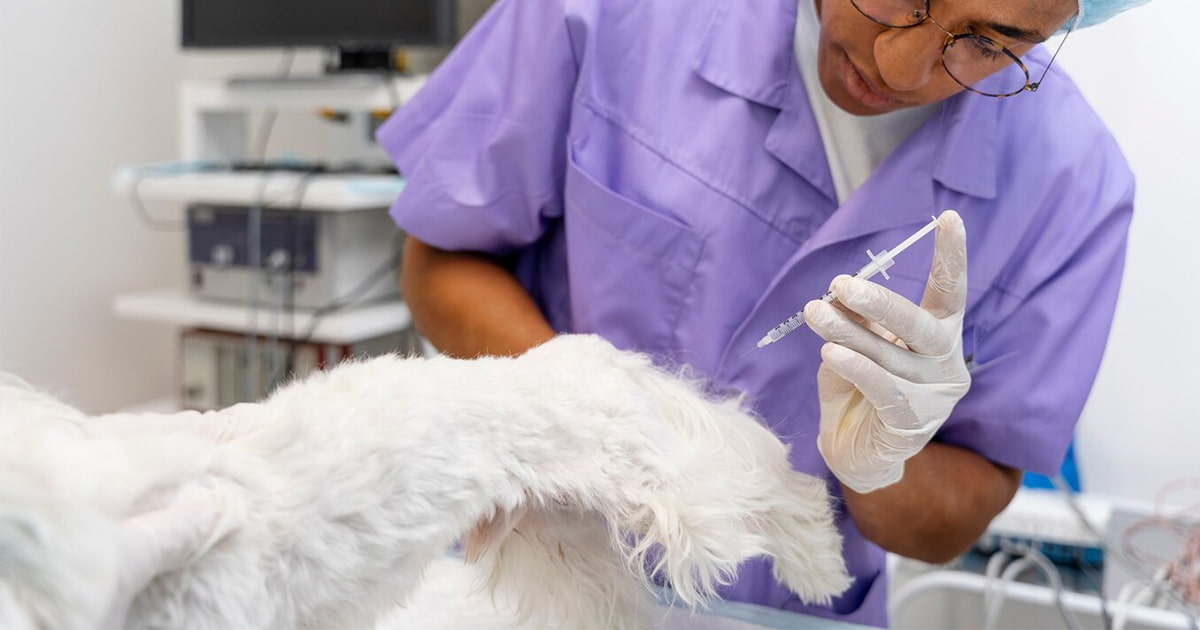Innovations in Loco-Regional Anaesthesia Techniques in Veterinary Medicine
A special issue of Veterinary Sciences (ISSN 2306-7381).
Deadline for manuscript submissions: closed (10 September 2025) | Viewed by 11143

Special Issue Editors
Interests: anaesthesia; analgesia; loco-regional anaesthesia technique; sedation; dogs; cats; rabbits
Interests: the anesthesia of both small and large animals; pharmacokinetic studies of drugs used for anesthesia and analgesia; regenerative medicine with particular attention to platelet concentrates for treatment of musculoskeletal disorders of dogs and horses
Special Issue Information
Dear Colleagues,
We are pleased to announce the Special Issue “Innovations in Loco-Regional Anaesthesia Techniques in Veterinary Medicine”.
In veterinary medicine, pain/nociceptive management is one of the most demanding challenges for anaesthetists. Different systemic drugs are available to manage pain and nociceptive stimuli; nevertheless, their use is not without potential side effects. In particular, the repeated use of opioids can result in several side effects, such as depression/lethargy, reduction in gastrointestinal motility, nausea, vomiting, dysphoria, immunosuppression, and chronic and neuropathic pain. These drawbacks are associated with a higher risk of complications and longer recovery time. The use of loco-regional anaesthesia plays an essential role in multimodal analgesia, reducing the use of systemic drugs and resulting in shorter and better animal hospitalisation. In recent years, the interest in loco-regional anaesthesia in human and veterinary medicine has been exponentially increasing, especially regarding inter-fascial techniques. Inter-fascial techniques are relatively easy to perform and have a low incidence of complications. The focus on small animals has brought research to a significant level of scientific interest that needs to be further investigated. In addition, growing interest in anaesthesia in large and unconventional animals has also been brought to the attention of researchers, and the pioneering research on loco-regional anaesthesia in these animals has been of substantial scientific interest. The Special Issue will consider innovative research, case reports, and reviews on loco-regional anaesthesia in small, large, and unconventional animals with a focus on novel techniques.
We look forward to hearing from you and receiving your valuable contribution focused on loco-regional anaesthesia.
Dr. Andrea Paolini
Associate Professor Noemi Romagnoli
Assistant Professor Dario Floriano
Guest Editors
Manuscript Submission Information
Manuscripts should be submitted online at www.mdpi.com by registering and logging in to this website. Once you are registered, click here to go to the submission form. Manuscripts can be submitted until the deadline. All submissions that pass pre-check are peer-reviewed. Accepted papers will be published continuously in the journal (as soon as accepted) and will be listed together on the special issue website. Research articles, review articles as well as short communications are invited. For planned papers, a title and short abstract (about 100 words) can be sent to the Editorial Office for announcement on this website.
Submitted manuscripts should not have been published previously, nor be under consideration for publication elsewhere (except conference proceedings papers). All manuscripts are thoroughly refereed through a single-blind peer-review process. A guide for authors and other relevant information for submission of manuscripts is available on the Instructions for Authors page. Veterinary Sciences is an international peer-reviewed open access monthly journal published by MDPI.
Please visit the Instructions for Authors page before submitting a manuscript. The Article Processing Charge (APC) for publication in this open access journal is 2100 CHF (Swiss Francs). Submitted papers should be well formatted and use good English. Authors may use MDPI's English editing service prior to publication or during author revisions.
Keywords
- loco-regional anesthesia
- veterinary pain management
- anesthetic techniques
- peripheral nerve blocks
- epidural anesthesia
- regional anesthetic innovations
- multimodal analgesia
- ultrasound-guided anesthesia
- veterinary surgical anesthesia
- analgesic drug delivery systems
Benefits of Publishing in a Special Issue
- Ease of navigation: Grouping papers by topic helps scholars navigate broad scope journals more efficiently.
- Greater discoverability: Special Issues support the reach and impact of scientific research. Articles in Special Issues are more discoverable and cited more frequently.
- Expansion of research network: Special Issues facilitate connections among authors, fostering scientific collaborations.
- External promotion: Articles in Special Issues are often promoted through the journal's social media, increasing their visibility.
- Reprint: MDPI Books provides the opportunity to republish successful Special Issues in book format, both online and in print.
Further information on MDPI's Special Issue policies can be found here.






